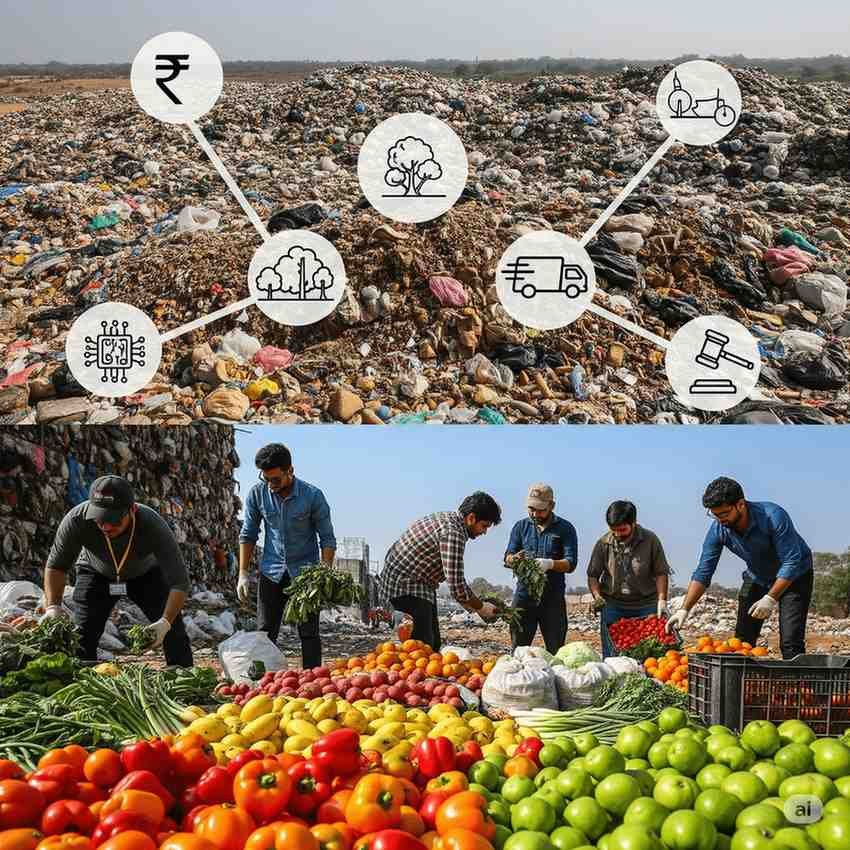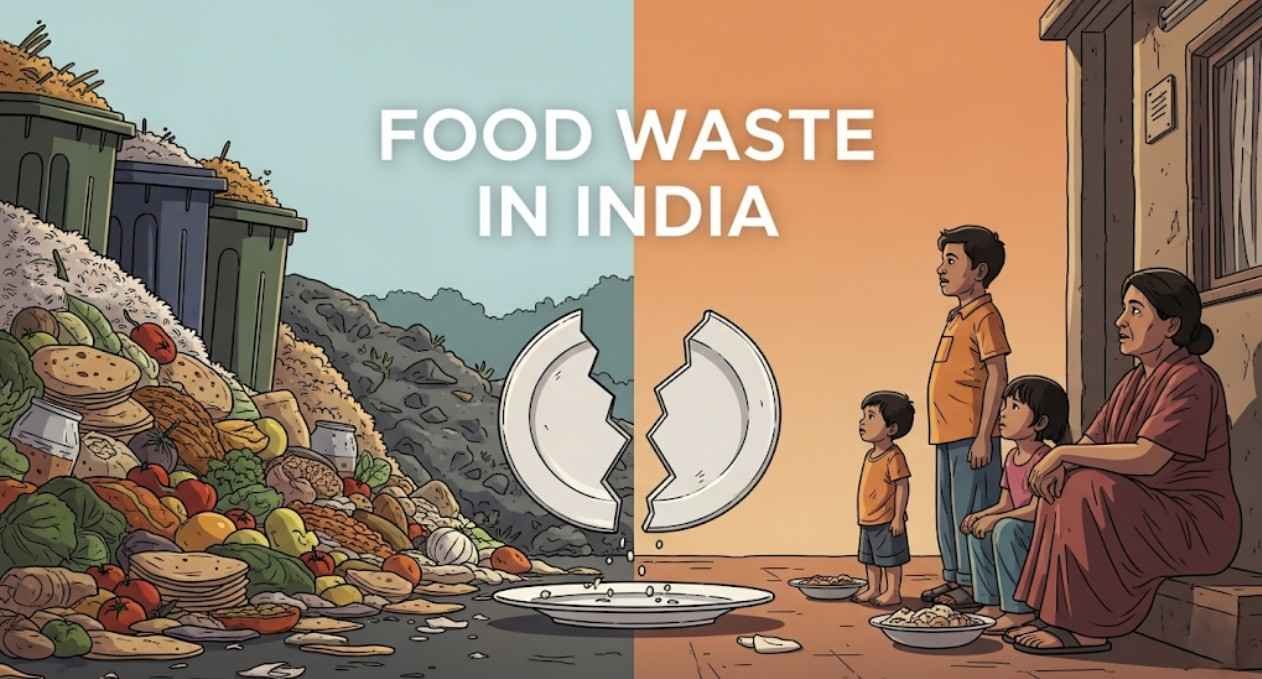Table of Contents
- Food Waste in India: Scale, Causes and Solutions
Food Waste in India: Scale, Causes and Solutions
Food waste in India is one of the biggest challenges in the fight against hunger. Every year, millions of tonnes of food are lost or wasted while millions of Indians sleep hungry. This gap between abundance and scarcity shows why food waste in India must be addressed urgently.
The Scale of Food Waste in India
India wastes an estimated 68 to 78 million tonnes of food every year. According to the Food and Agriculture Organization (FAO), nearly 40% of the food produced in India is lost before it reaches consumers. At the same time, the Global Hunger Index ranks India poorly, with millions facing malnutrition.
This mismatch is shocking. While cities throw away surplus food, rural communities and urban slums struggle with empty plates. Food waste in India not only affects hungry families but also wastes the water, land, and energy used to grow that food.

Causes of Food Waste in India
Food is wasted at many stages. Some key causes include:
1. Inefficient farming and storage
Farmers often lose crops due to poor harvesting techniques. Lack of cold storage and modern warehouses means fruits, vegetables, and grains rot quickly.
2. Transportation gaps
India’s supply chain is weak. Food spoils in transit due to delays, heat, and lack of refrigerated vehicles.
3. Market surplus
At mandis, excess food is often dumped when prices fall too low. Retailers also reject produce that looks imperfect even if it is safe to eat.
4. Consumer behavior
In cities, people often buy more food than they can finish. Hotels, restaurants, and weddings also generate massive food waste daily.
5. Lack of awareness
Many people do not realize the link between food waste and hunger. Throwing food away is seen as normal instead of harmful.
How much food is wasted in India annually?
Impact of Food Waste in India
The effects of food waste go beyond hunger. They touch health, economy, and the environment.
Hunger and malnutrition
Wasted food could feed millions of Indians who face daily hunger. The National Family Health Survey shows high rates of child stunting and anemia in women.
Economic loss
The economic cost of food waste in India runs into billions of rupees each year. Farmers lose income, and the country loses resources that went into production.
Environmental damage
When food rots in landfills, it produces methane, a greenhouse gas stronger than carbon dioxide. Wasting food also means wasting the water and fuel used to grow and transport it.
Global food losses | SDG Indicators Data Portal
Solutions to Reduce Food Waste in India
The good news is that solutions exist. Governments, businesses, NGOs, and citizens can work together to cut waste.
1. Better storage and transport
Investing in cold storage, warehouses, and refrigerated trucks can save food from spoiling.
2. Smarter supply chains
Technology can connect farmers, retailers, and NGOs to manage surplus better. Apps that match extra food with nearby NGOs already show results.
3. Community food banks
NGOs in India collect surplus food from hotels, restaurants, and homes to redistribute to those in need. Food banks reduce waste and hunger at the same time.
4. Consumer awareness
Simple actions matter. Buying only what we need, finishing what we cook, and donating leftovers can make a difference.
5. Policy support
The government can promote rules that encourage food donation. Tax benefits for businesses donating food will motivate more companies to join.
(Internal link suggestion: Link to your blog on “Food donation and ESG goals” to show how corporate food donations align with sustainability.)
Role of NGOs in Reducing Food Waste
NGOs play a key role in bridging the gap between surplus and scarcity. They collect extra food from events, businesses, and households. They then redistribute it to shelters, slums, and rural areas.
Reshine Organisation, for example, is working to make sure that good food is not wasted but reaches hungry families. NGOs also spread awareness about food waste and work with communities to build a culture of sharing.
How Reshine Organisation Is Different from Other NGOs
What You Can Do as an Individual
- Plan meals and shop wisely
- Store food correctly to avoid spoilage
- Share surplus food with those in need
- Support NGOs that fight hunger
- Educate others about the importance of reducing food waste
Small steps add up. If each person in India reduces waste, together we can feed millions.
FAQs on Food Waste in India
Q1. How much food is wasted in India every year?
India wastes around 68 to 78 million tonnes of food annually, almost 40% of total production.
Q2. Why does India waste so much food?
Lack of storage, poor transport, surplus in markets, and consumer habits are major reasons.
Q3. How does food waste affect hunger?
Wasted food could feed millions of people. Instead, it ends up in landfills while many go hungry.
Q4. What are the environmental impacts of food waste in India?
Food waste leads to methane emissions, resource loss, and higher pressure on agriculture.
Q5. How can NGOs reduce food waste?
NGOs collect extra food, redistribute it to those in need, and raise awareness about sustainable practices.
Conclusion: Together We Can Fight Hunger
Food waste in India is not just an economic or environmental issue. It is a moral challenge. Every grain wasted is a lost chance to feed someone in need. By reducing waste, supporting NGOs, and spreading awareness, we can build a more food-secure India.
At Reshine Organisation, we work daily to collect surplus food and deliver it to hungry families. Your support can help us reach more people. Donate today and be part of the change.




